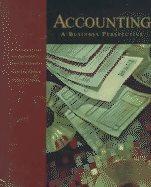Question
30) Determining the right level of capacity is an important strategic decision. TRUE FALSE 31) Both theoretical and practical capacity measure capacity in terms of
30) Determining the "right" level of capacity is an important strategic decision.
TRUE FALSE
31) Both theoretical and practical capacity measure capacity in terms of demand for the output.
TRUE FALSE
32) Normal capacity utilization is the expected level of capacity utilization for the current budget period, which is typically one year.
TRUE FALSE
Chapter 10 Analysis of Cost Behaviour
33) A linear cost function is a function in which the graph of total costs versus a single cost driver forms a straight line, within the relevant range.
TRUE FALSE
34) When estimating linear cost functions, it is assumed that variations in total cost of a cost object cannot be explained by variations in a single cost driver.
TRUE FALSE
35) A mixed cost has a fixed element.
TRUE FALSE
Chapter 11 Decision Making and Relevant Information
36) A decision model is a formal method of making a choice that uses only quantitative analyses.
TRUE FALSE
37) The purpose of evaluating performance in the decision process is to provide feedback.
TRUE FALSE
38) Anticipated future costs that differ with alternative courses of action are known as relevant costs.
TRUE FALSE
39) The total cost difference between two separate alternatives in a decision-making process is the net relevant cost.
TRUE FALSE
40) Each item included in the relevant-cost analysis should differ according to the alternative being considered and be an expected future revenue or cost.
TRUE FALSE
Step by Step Solution
There are 3 Steps involved in it
Step: 1

Get Instant Access to Expert-Tailored Solutions
See step-by-step solutions with expert insights and AI powered tools for academic success
Step: 2

Step: 3

Ace Your Homework with AI
Get the answers you need in no time with our AI-driven, step-by-step assistance
Get Started


